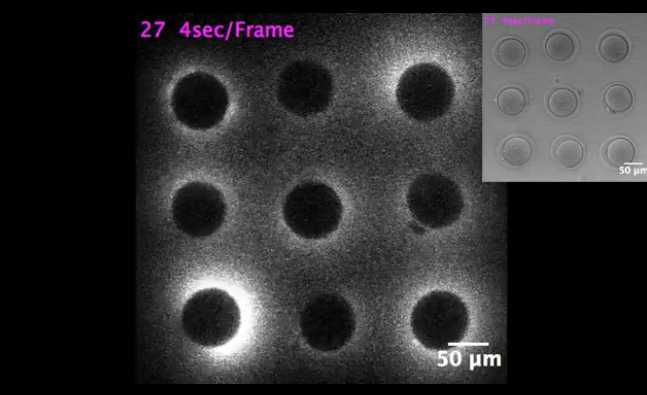 CHICAGO — Life begins with a “flash of light” or “fireworks,” scientists at a university in Illinois have announced in releasing a written study and video that captures what occurs at the moment of human conception.
CHICAGO — Life begins with a “flash of light” or “fireworks,” scientists at a university in Illinois have announced in releasing a written study and video that captures what occurs at the moment of human conception.
Northwestern University in Chicago recently announced the find in a study outlined in Scientific Reports.
“It was remarkable,” said Teresa Woodruff, director of Northwestern’s Center for Reproductive Science. “We discovered the zinc spark just five years ago in the mouse, and to see the zinc radiate out in a burst from each human egg was breathtaking.”
When sperm meets egg, it causes an increase of calcium and the release of zinc, which radiates out from the egg as it binds to probes and is visible under microscope as a flash or fireworks-type display. Researchers found that only mature eggs are activated by the sperm, as no flash occurred in eggs that had not reached maturity.
Using a fluorescent sensor, scientists were able see approximately 8,000 pockets of zinc storing an estimated million zinc atoms per egg. It is believed that the eggs that had a more significant flash were of greater quality.
“All of biology starts at the time of fertilization, yet we know next to nothing about the events that occur in the human. This discovery required a unique partnership between biologists and chemists and non-federal dollars to support the research,” Woodruff stated in a press release from the university.
She said that the study helps to provide scientists with information on how to select the best eggs for in vitro fertilization.
“This means if you can look at the zinc spark at the time of fertilization, you will know immediately which eggs are the good ones to transfer in in vitro fertilization (IVF),” Woodruff explained. “It’s a way of sorting egg quality in a way we’ve never been able to assess before.”
“There are no tools currently available that tell us if it’s a good quality egg. Often we don’t know whether the egg or embryo is truly viable until we see if a pregnancy ensues,” co-study author Dr. Eve Feinberg also stated. “That’s the reason this is so transformative. If we have the ability up front to see what is a good egg and what’s not, it will help us know which embryo to transfer, avoid a lot of heartache and achieve pregnancy much more quickly.”
Researchers used sperm enzyme and not actual sperm to conduct the study, which would be illegal.
The study was released in the April 26 edition of Scientific Reports. Northwestern University also released a video demonstrating the spark that occurs when sperm meets egg and zinc is released, as well as the difference between what happens in an immature egg and a mature egg.
Become a Christian News Network Supporter...


